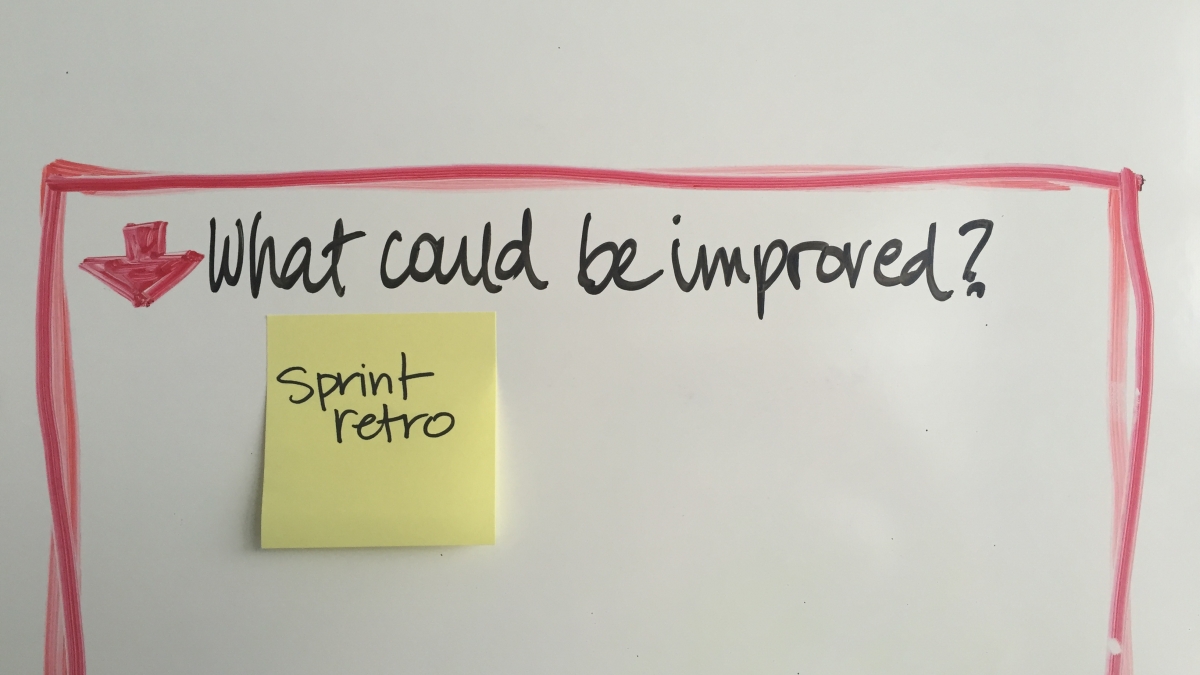
Sprint Retros that aren't Boring
At the end of each sprint we have a brief meeting to reflect on how we’re doing and identify ways we can improve. Last week we decided that these meetings - our Sprint Retrospectives - are in a rut and that we can do better. Here are a few fresh ideas to breathe life back into the very important Sprint Retro.
STARFISH
Rather than just answering the questions “what went well” and “what didn’t” the Starfish Retrospective asks the team to consider issues and the actions they’d like to do more of, do less of, start, stop, or continue doing to improve as a team.

How it's done:
1. Draw and label the Starfish diagram
- More
- Less
- Start Doing
- Keep Doing
- Stop Doing
2. Ask the team to think of and write down issues for each of the categories:
- More - What went well? What things did you like about this sprint?
- Less - What went poorly? What do you want see/do less of in future sprints?
- Start Doing - What are some suggestions for improvement? Is there anything new you’d like to try?
- Keep Doing - What things would you miss if they weren’t happening? If you didn’t have them?
- Stop Doing - Which things have no value or negatively impact our work?
3. Have team members place the post-it notes in the appropriate category and discuss with the team.
4. Identify actions for improvement.
FRIM: FRequency & IMpact
This technique will identify the positive and negative things are happening within the team and understand how beneficial or painful these things are due to their frequency.

How it's done:
1. Draw and label a sideways T-shaped matrix
- label x-axis frequency 1-5
- label y-axis positive/negative imact -5 - +5
2. Ask the team to write on Post-it notes things that had a positive or negative impact on them during the sprint.
3. Have team members place their post-it note on the coordinate based on the impact and frequency it occurred.
4. Discuss the Post-it notes as a group. Start with the most frequent positive or negative impacts and work towards the opposite corner.
5. Identify actions for improvement in the future.
FLAP
This exercise takes a little longer than the other two mentioned above, but if you have the time it’s useful for identifying Future Considerations, Lessons Learned, Accomplishments and Problem Areas. This is a great exercise to run at the end of a sprint or the end of a project.

How it's done:
1. Draw and label the FLAP quadrants
- Future Considerations
- Lessons Learned
- Accomplishments
- Problem Areas
2. (OPTIONAL) Create a color code for the post-its. In this example, we used the following:
- PINK - Team
- BLUE - Tools and Technology
- YELLOW - Client and Scope
- ORANGE - Process
3. Ask the team to think of and write future considerations, lessons learned, accomplishments, and problem areas as they pertain to the team, tools/technology, client/scope, and process.
4. Have team members place the post-it notes in the appropriate quadrant and discuss feedback with the team.
5. Identify actions for improvement in the future.
Regularly changing the format of your team’s Retrospectives not only keeps things interesting, it gives the team new and valuable ways to talk about issues that happened during a sprint.


